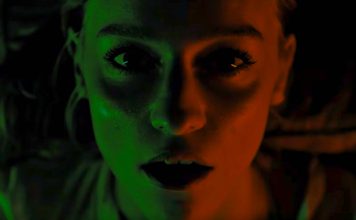Warum ist die Mona Lisa eigentlich so berühmt?
Sie sehen gerade einen Platzhalterinhalt von Vimeo. Um auf den eigentlichen Inhalt zuzugreifen, klicken Sie auf die Schaltfläche unten. Bitte beachten Sie, dass dabei Daten an Drittanbieter weitergegeben werden.
What if we told you that the “Mona Lisa” was merely famous for being famous? How would you feel if you found out that Leonardo Da Vinci’s oil painting was the Kim Kardashian or the Paris Hilton of Renaissance art? Confused? Well, it turns out the painting’s fame can be attributed less to its artistic qualities and more to the circumstances that befell the half-length portrait. We’ll let the lady herself explain.
Weshalb war Usain Bolt so schnell?
The best sprinters also run with a different form than the rest of us. It’s not that they move their legs significantly faster; it’s that they hit the ground harder (paywall). Most of the force sprinters generate is directed straight into the ground for vertical movement; only about 5% is used to propel them forward, Peter Weyand, a physiologist studying human speed at Southern Methodist University in Texas, told Popular Science in 2013. The more force a sprinter can pack into the ground with a quick foot strike, the faster he or she goes.
Wie funktionieren die Lungen?
Sie sehen gerade einen Platzhalterinhalt von YouTube. Um auf den eigentlichen Inhalt zuzugreifen, klicken Sie auf die Schaltfläche unten. Bitte beachten Sie, dass dabei Daten an Drittanbieter weitergegeben werden.
When you breathe, you transport oxygen to the body’s cells to keep them working, while also clearing your system of the carbon dioxide that this work generates. How do we accomplish this crucial and complex task without even thinking about it? Emma Bryce takes us into the lungs to investigate how they help keep us alive.
Wie funktionert Koffein?
Ich mag ja bekanntermaßen keinen Kaffee, der Geschmack ist einfach bäh. Aber die Droge im Kaffee ist dummerweise famos. Koffein ist toll.
Sie sehen gerade einen Platzhalterinhalt von YouTube. Um auf den eigentlichen Inhalt zuzugreifen, klicken Sie auf die Schaltfläche unten. Bitte beachten Sie, dass dabei Daten an Drittanbieter weitergegeben werden.
Over 100,000 metric tons of caffeine are consumed around the world every year. That’s equivalent to the weight of 14 Eiffel Towers! Caffeine helps us feel alert, focused, and energetic, even if we haven’t had enough sleep — but it can also raise our blood pressure and make us feel anxious. So how does it keep us awake? Hanan Qasim shares the science behind the world’s most widely used drug.
Bildformat ist nicht gleich Bildformat
Sie sehen gerade einen Platzhalterinhalt von Vimeo. Um auf den eigentlichen Inhalt zuzugreifen, klicken Sie auf die Schaltfläche unten. Bitte beachten Sie, dass dabei Daten an Drittanbieter weitergegeben werden.
Es gibt eine Maschine, mit der man Schneckenschleim ernsten kann
Sie sehen gerade einen Platzhalterinhalt von Vimeo. Um auf den eigentlichen Inhalt zuzugreifen, klicken Sie auf die Schaltfläche unten. Bitte beachten Sie, dass dabei Daten an Drittanbieter weitergegeben werden.
For centuries, humans have put snail slime on their faces. Why? They believed its nutrient-rich properties fought wrinkles, scars and redness. Modern research shows they were right to covet snail slime, and that’s where Simone Sampò comes in. After realizing that industrial snail slime extraction methods harmed and killed snails, he spent nine years researching and inventing a machine that can extract copious amounts of slime from snails without killing them. In fact, it pleasures them. It’s quite possibly the first ever spa for snails.
Was ist an Purpur so besonders?
Sie sehen gerade einen Platzhalterinhalt von Vimeo. Um auf den eigentlichen Inhalt zuzugreifen, klicken Sie auf die Schaltfläche unten. Bitte beachten Sie, dass dabei Daten an Drittanbieter weitergegeben werden.
Weshalb wir alle süchtig sind
Sie sehen gerade einen Platzhalterinhalt von Vimeo. Um auf den eigentlichen Inhalt zuzugreifen, klicken Sie auf die Schaltfläche unten. Bitte beachten Sie, dass dabei Daten an Drittanbieter weitergegeben werden.
Regenbögen können pefekte Kreise sein
Sie sehen gerade einen Platzhalterinhalt von YouTube. Um auf den eigentlichen Inhalt zuzugreifen, klicken Sie auf die Schaltfläche unten. Bitte beachten Sie, dass dabei Daten an Drittanbieter weitergegeben werden.
In very rare circumstances it is possible to see a full 360 degree rainbow from an airplane from woahdude
So, to see a rainbow, you face away from the Sun (180°), then look about 42° away from that point (180°–138°). The drops in an arc along that angle will then bend the light back toward you, and you get a rainbow, with the colors spread out a bit because they bend by different amounts.
Oh, wait. Did I say “arc”? Because technically, any raindrop 42° away from the anti-solar point (ooh, fancy science-speak again) will bend the light back to you. We see rainbows in the sky because in general the ground is close to you. When we look up toward the sky we see for a long way, and there are lots of raindrops along your eyeline that can add their light together to make the rainbow. When you look down, the ground gets in the way, there aren’t as many drops, and you don’t see a rainbow.
Das Titelbild basiert auf einem Foto von Glen Noble. Lizenz: CC0 1.0. Danke!







